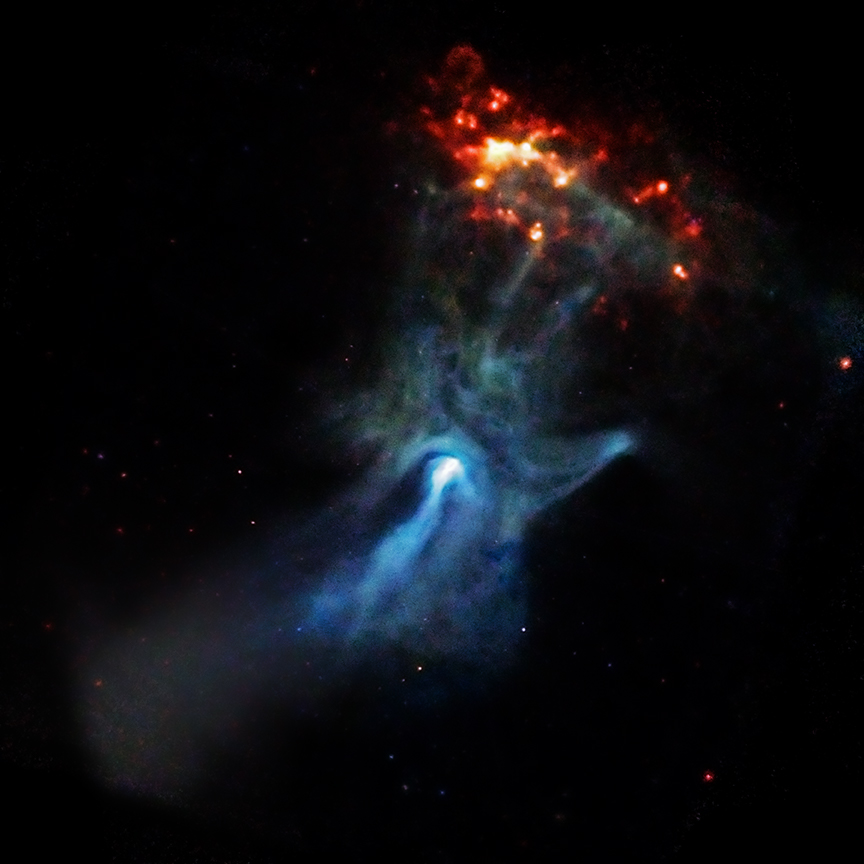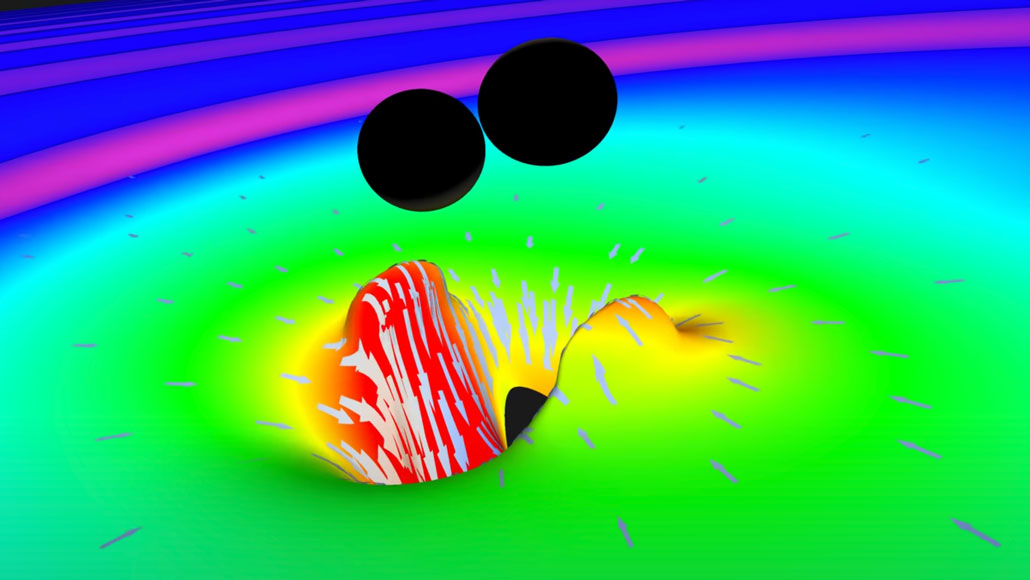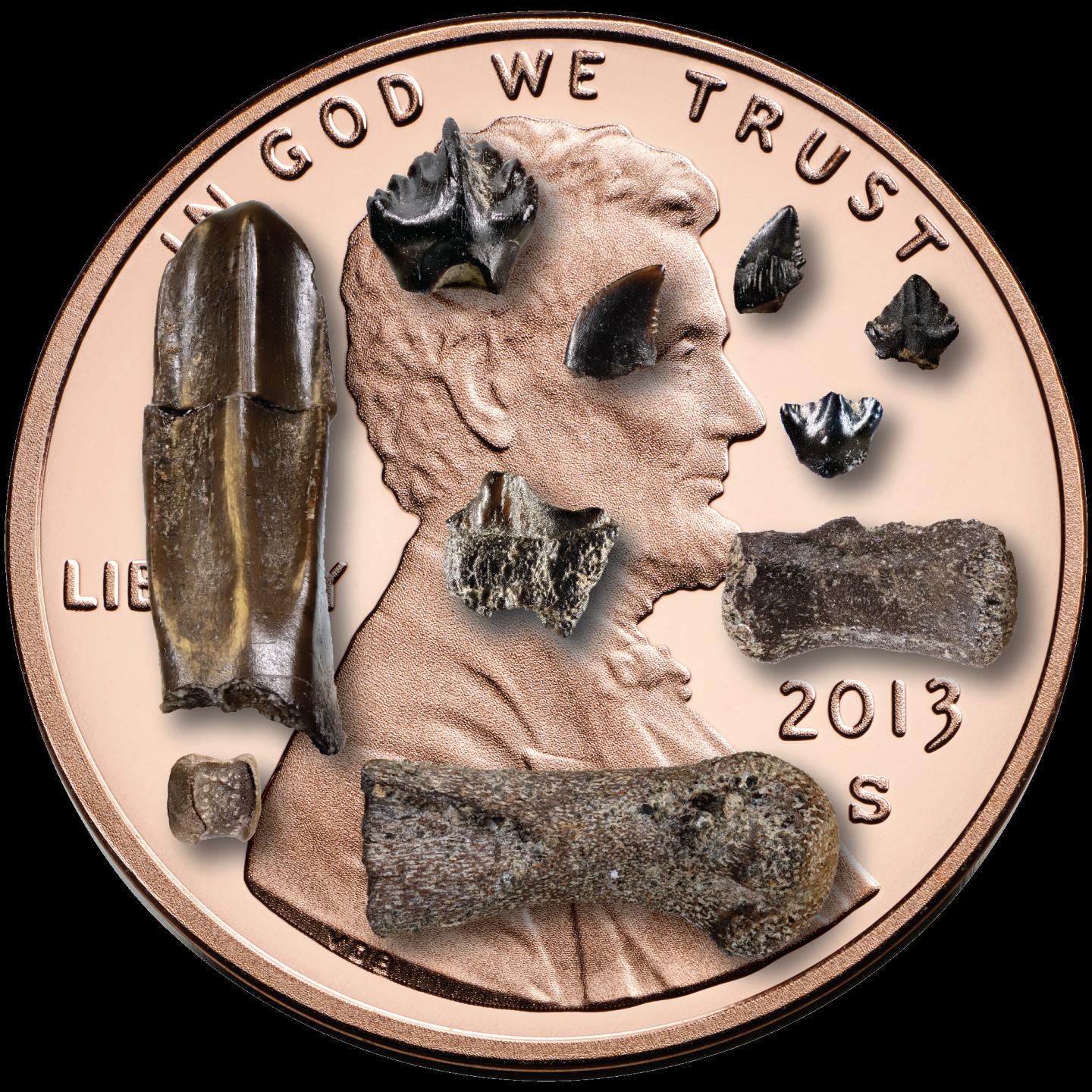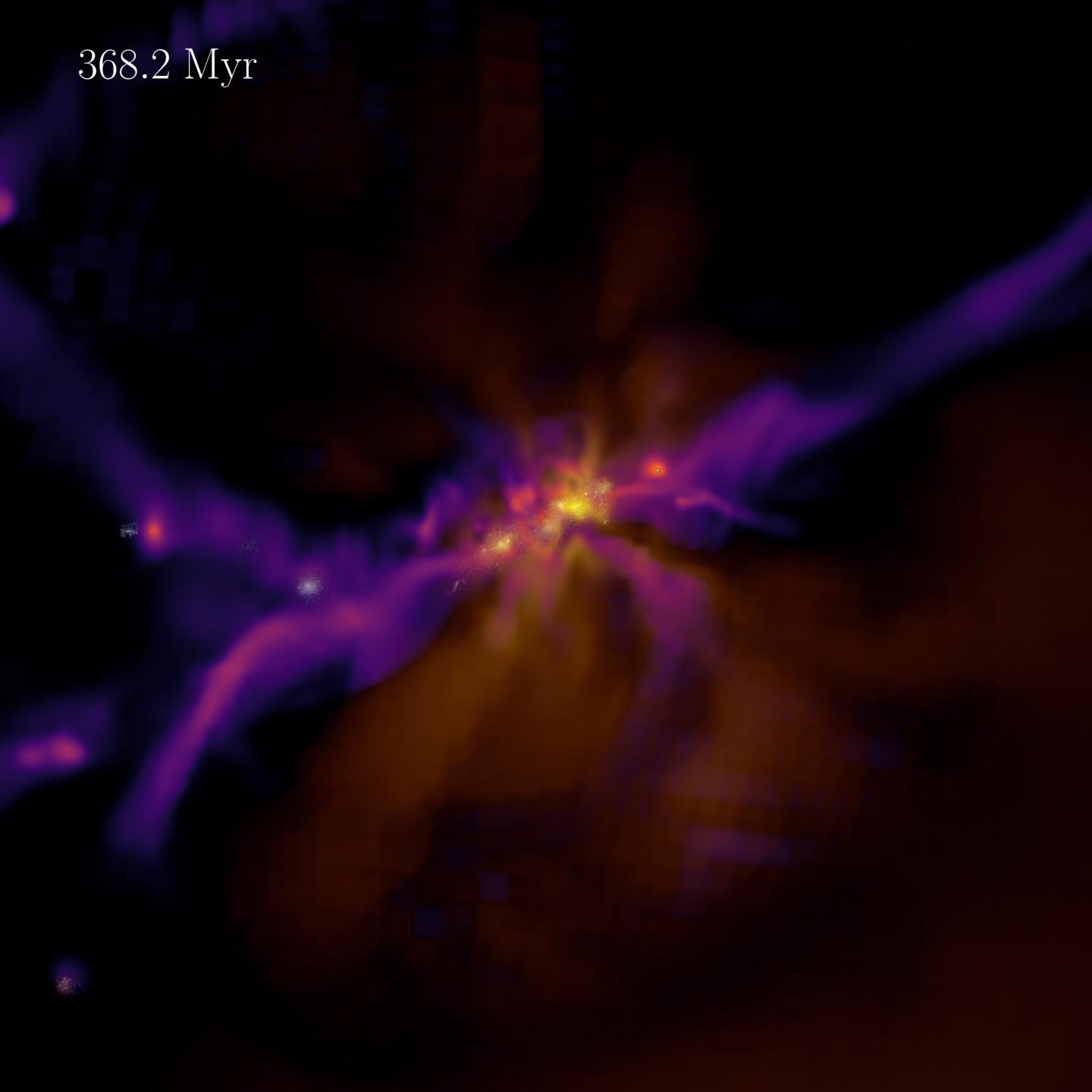The fossilized teeth and bones of baby dinosaurs found in northern Alaska may indicate that dinosaurs didn’t just summer in the Arctic but nested and raised their young there. Plus, the cosmic dawn, a cosmic hand, black holes, and preserving core samples for the future of science.
Podcast
Transcript
Hello and welcome to the Daily Space. I am your host Dr. Pamela Gay.
And I am here to put science in your brain.
Most of the time, the images we get back from spacecraft and telescopes are beautiful. Sometimes they’re meh or boring. Occasionally, they are downright creepy. Early in this century, astronomers using the Chandra X-ray Observatory spotted a structure made of hot gas that looks like a creepy hand generated by your favorite special effects company.

In 2009, the ghost hand was described as a 150-light-year spanning cloud of gas illuminated by a rapidly spinning neutron star that could briefly fit on Manhattan Island before its gravity destroyed the planet. Named B1509, this pulsar is only 1,700 years old and would have formed in a supernova explosion while the Mayan civilization was at its peak and the Jin Dynasty ruled China.
In addition to lighting a hand-shaped structure, the supernova also generated a shockwave that is expanding through space fast enough that we can see it changing from year to year. In comparing images from 2004 and 2008 with data from 2017 and 2018, it is possible to see the ring of light that the hand appears to be touching changing ever so slowly. That ring is where the shockwave is hitting a wall of otherwise invisible material and heating it up to be visible in x-rays. As the shock expands and moves through the wall, we see a larger ring. This is comparable to how a flashlight beam or headlights appear to be illuminating larger cones as they pass through a cloud of fog or dust.
The science is super cool… or super hot if you want to be literal. The image is one that won’t be going on my wall
From that creepy story, we now transition to something more bitter-sweet. One of Stephen Hawking’s weirder theoretical discoveries about black holes has been observationally proven. Three years ago, Hawking died at age 76, which is an age many of us can only hope to attain. Had he lived just a bit longer, however, this discovery might finally have allowed him to get the Nobel Prize so many of us hoped his theoretical work would one day earn him. Nobel Prizes are only given to people who make discoveries of provable attributes of our universe, mathematics, medicine, chemistry, and the other fields Nobel Prizes are given for. Theory alone doesn’t get you one, and Hawking’s theories exceeded our observational abilities until recently.

This particular theory stated that while black holes can grow in area as they consume matter, effects like increasing spin can’t shrink a black hole. This is sort of the inverse of the ice skater who spins faster when their arms are drawn in. Instead, you’d expect a black hole to get smaller as it spins faster, but it turns out that while you can form a smaller black hole by having it spin while forming, you cannot shrink it by spinning it faster later.
The physics of black holes is just weird, kind of uncomfortable to think about, and now testable thanks to gravitational wave science. By looking at pre- and post-merger data for a black hole-black hole merger, researchers were able to see that the area of the final black hole exceeded the combined area of the two original black holes. That Hawking figured this out without data to hint that this could be true shows how creative his mind was. This work is published in Physical Review Letters and was led by Maximilliano Isi.
One of the most delightful things about science is how wrong we sometimes get things. Take dinosaurs. I recognize dinosaurs aren’t space, but Earth is a planet and dinosaurs were early life that was wiped out by an asteroid from space, so we’re going to talk dinosaurs for a moment.
Growing up, like most little kids, I was totally into dinosaurs. To be fair not much has changed other than I somehow forgot most dinosaur names, which have admittedly mostly changed anyway. Once upon my childhood, we thought they were basically massive, cold-blooded reptiles, and like the iguanas that fall out of trees on cold Florida days, it was thought they just wouldn’t cope so well with cold.
We were wrong.

Dinosaurs were giant birds not giant lizards and, as such, seem to have been warm-blooded, and like birds, they occupied all sorts of ecosystems lizards dare not enter.
New research published in Current Biology examines fossils from a region of Alaska that was near the North Pole when dinosaurs thrived and had weather not too different from snowy, cold Ottawa. These fossils demonstrate that at least seven species of large and small dinosaurs were likely living year-round in this arctic region, breeding and raising their young, and surviving through the long, dark cold winter of the extreme north. This work was led by Patrick Druckenmiller who reports: It wasn’t that long ago that the idea of finding any dinosaurs in such extreme latitudes and environments was a surprise.
Co-author Gregory Erickson goes on to say: Cold-blooded terrestrial vertebrates like amphibians, lizards, and crocodilians have yet to be found, only warm-blooded birds and mammals–and dinosaurs. I think that this is some of the most compelling evidence that dinosaurs were in fact warm-blooded.
And don’t forget the feathers. These dinosaurs may have had feathers to help keep them warm.
In a fascinating new paper in the Monthly Notices of the Royal Astronomical Society, astronomers led by Nicolas Laporte have done what I can only describe as an archeological dig through the light of the most distant known galaxies to try and understand the ages of the stars in this old light.
Let’s break this down. Light takes time to travel. This means that when we look at galaxies that are thirteen billion light-years away, we are seeing light that was released from stars and hot gas when the universe was only 550 million years old. We know how to roughly judge the age of a galaxy or a star cluster by looking at what distribution of stars is required to create the light we observe.

To figure out when stars started to form, we can look at light from the oldest galaxies and then figure out how old their oldest stars are. When the universe was just 500 million years old, there were already stars that were 200-300 million years old. This means that there were already stars forming when the universe was 250-350 million years old. This gives a new and improved timeline for our universe.
At time equals zero, there was a universe. People can argue that it was already there but in a different form, and I’m not here to argue this detail. It is enough to say, at T=0, there was a universe. By the end of the first three minutes, the energy had started to form matter, and that matter (by which I mean protons and electrons and such) underwent simple nuclear reactions and created the initial mix of hydrogen, helium, and traces of lithium and beryllium nuclei that were the ingredients available for the first stars.
For roughly 400,000 more years, the universe was way too hot and dense for any structures to form, not even neutral atoms, and things expanded with reverberating sound waves shaping the mix of energy and nuclei. Everything was opaque, and not even light could travel any real distance without being absorbed and reemitted.
Then one day, about 400,000 years after it all started, everything was finally cool enough and diffuse enough that the electrons and the nuclei could finally form atoms, and with this simple change, light that we now see as the Cosmic Microwave Background was released to shine everywhere. And then, for a few million years, that not entirely smooth mix of material continued to expand and cool, but fighting against that expansion, areas with a bit more matter gravitationally pulled on their surroundings, pulling in material in that would collapse to form stars and galaxies. To go from a smooth distribution of material with place-to-place density differences of a fraction of a percent to a distribution having material dense enough to form stars? That slow collapse against the expansion of the universe only took 250-350 million years.
That sounds like a lot of time, but even here on the planet Earth, it really isn’t. 300 million years ago, the oceans were teeming with the ammonite snails so many of us either have as jewelry or collect in Animal Crossing. Mammals, reptiles, amphibians all existed and lived in the shadow of the apex predator, the Dimetrodon. In the time it took life to get from Dimetrodons ruling the world to humans being humans… that is the same amount of time it took our universe to go from zero to stars.
And that is your moment of cosmic “wow”.
[Transcript unavailable. See the link section for more information.]
For now, though, this has been the Daily Space.
Learn More
Creepy Cosmic Hand Touches Stellar Blast
- Chandra X-ray Observatory press release
- “Fast Blast Wave and Ejecta in the Young Core-Collapse Supernova Remnant MSH 15-52/RCW 89,” Kazimierz J. Borkowski, Stephen P. Reynolds, and William Miltich, to be published in The Astrophysical Journal Letters (preprint on arxiv.org)
Hawking Was Right! Black Holes Lose Mass But Not Area
- Gravitational waves confirm a black hole law predicted by Stephen Hawking (Science News)
- “Testing the black-hole area law with GW150914,” Maximiliano Isi et al., to be published in Physical Review Letters (preprint on arxiv.org)
Dinosaurs in the Arctic: Not Just a B-Movie
- For some dinosaurs, the Arctic may have been a great place to raise a family (Science News)
- “Nesting at extreme polar latitudes by non-avian dinosaurs,” Patrick S. Druckenmiller et al., 2021 June 24, Current Biology
Cosmic Archeology Reveals Stars Formed at T+250 Million Years
- University College London press release
- “Probing cosmic dawn: Ages and star formation histories of candidate z ≥ 9 galaxies,” N Laporte et al., 2021 June 24, Monthly Notices of the Royal Astronomical Society
Under Construction: Antarctic Cold Storage for Science Samples
REVIEW: Best Guide to Plan Your Night is RASC Observer’s Handbook
- 2021 Observer’s Handbook (RASC)
Credits
Written by Pamela Gay
Hosted by Pamela Gay
Audio and Video Editing by Ally Pelphrey
Content Editing by Beth Johnson
Intro and Outro music by Kevin MacLeod, https://incompetech.com/music/


 We record most shows live, on Twitch. Follow us today to get alerts when we go live.
We record most shows live, on Twitch. Follow us today to get alerts when we go live.